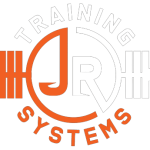Knee pain is an all-too-familiar ailment for many individuals, especially those who lead active lifestyles or participate in activities like running. What might surprise you, however, is that often the root of knee pain can be traced back to issues in other parts of the body, specifically the hips and ankles. In this blog post, we’ll explore why knee pain is often connected to weak and immobile hips and the significant role ankle mobility plays in knee health. We’ll also introduce a key exercise, the side-lying leg raise, that targets the glute medius and minimus, helping to alleviate knee pain, especially lateral knee pain.
Understanding the Connection Between Hip Strength and Knee Pain
Recent studies have shed light on the relationship between hip strength and knee pain. Weak hips, particularly the gluteus medius and minimus, can contribute to abnormal knee mechanics, resulting in discomfort and even injury. When these muscles are underdeveloped or not functioning optimally, it places extra stress on the knees during activities like running.
A study published in the Clinical Journal of Sport Medicine found that individuals with weak hip abductor muscles were more prone to developing patellofemoral pain syndrome, a common cause of anterior knee pain. This highlights the critical role of hip strength in knee stability and health.
Ankle Mobility’s Impact on Knee Health
While it might seem unrelated, ankle mobility plays a substantial role in knee health as well. Limited ankle mobility can force the knees to compensate, leading to increased strain on the knee joint. When the ankles don’t move through their full range of motion, it can result in poor gait patterns and improper loading of the knees.
One study in the Journal of Orthopaedic Research discovered a connection between restricted ankle dorsiflexion, which is the ability to bring the toes closer to the shin, and an increased risk of developing patellar tendinopathy. This underlines the importance of maintaining proper ankle mobility to protect the knees from potential injuries.
The Side-Lying Leg Raise: A Solution for Knee Pain
Now that we understand the relationship between hip strength and knee pain, let’s dive into a powerful exercise that can help alleviate knee discomfort, especially lateral knee pain – the side-lying leg raise. This exercise specifically targets the glute medius and minimus, two muscles crucial for hip stability and knee health.
The Side-Lying Leg Raise: How It Works
- Lie on your side: Start by lying on your side with your legs straight and stacked on top of each other.
- Support your head: You can rest your head on your lower arm for comfort.
- Engage your core: Gently engage your core muscles to stabilize your pelvis.
- Lift your top leg: While keeping it straight, lift your top leg as high as comfortably possible. You should feel the tension in your hip.
- Lower your leg: Slowly lower your leg back down, but don’t let it touch your bottom leg. This ensures constant tension on the glute muscles.
- Repeat: Perform 2-3 sets of 10-15 repetitions on each side.
Strengthening the Glute Medius and Minimus
The side-lying leg raise primarily targets the gluteus medius and minimus, the muscles responsible for hip abduction. These muscles help maintain pelvic stability and prevent your knees from caving in during activities like running. When strong and well-functioning, they can reduce the risk of lateral knee pain and other knee issues.
How to Beat Knee Pain: A Holistic Approach
When it comes to addressing knee pain, it’s important to take a comprehensive approach. Strengthening your hip abductors through exercises like the side-lying leg raise, improving ankle mobility, and maintaining proper running form can significantly reduce the risk of knee pain and enhance your overall knee health. Don’t let knee pain hold you back – tackle it from the source by building strong hips and mobile ankles. Your knees will thank you.
In conclusion, knee pain is often due to weak and immobile hips and limited ankle mobility. Studies confirm the link between hip strength and knee health and the role of ankle mobility in knee stability. Incorporating exercises like the side-lying leg raise can help strengthen the glute medius and minimus, providing relief from knee pain, especially lateral knee pain. By adopting a holistic approach, you can reduce the risk of knee pain and continue enjoying your active lifestyle without hindrance.

